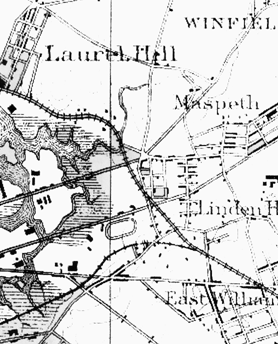from the Queens Ledger; October 22, 1948
Maspeth under the old name of Metsepe, corrupted to Mespat (Dutch Maestealches) Killetze, later English Kill and subsequently Newtown Creek, is regarded as the oldest settlement in Queens.
It is mentioned as early as 1621, one year after the arrival of the Mayflower and of the Pilgrim fathers, when trading rights were granted there to the Dutch West Indian Company. It had the monopoly of large shipments of beaver and other skins, which lasted until 1638, when trading with the Indians was opened to all.
The first effort to settle the western part of Long Island dates from approximately that year, and it is interesting to note that the purpose was to seek and practice a real religious liberty which was lacking in New England. It is indeed here that lies the birthplace of the liberty of conscience and freedom of religious worship which we now enjoy.
Harassed by the intolerance which had caused the banishment of Roger Williams, Anne Hutchinson and many others, a small group of the original settlers of Plymouth negotiated with Governor Kieft at new Amsterdam, and were granted a tract of land in the region of Mespat Creek. However, the General Council of Massachusetts, displeased at the prospect of strengthening the Dutch persuaded them to give up the plan.
Two years later this region was again sought as a haven of refuge by the Rev. Francis Doughty, acting as agent for a number of followers. Governor Kieft granted him a ground brief for 13,332 acres “in common, to found a town.” Thus the village of Mespat, white settlement on Long Island.
This deed, the oldest document on file in the Land Bureau at Albany, is dated March 28, 1642. Though the ink is faded, the document is still plainly legible.



